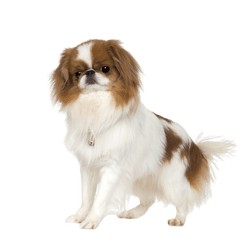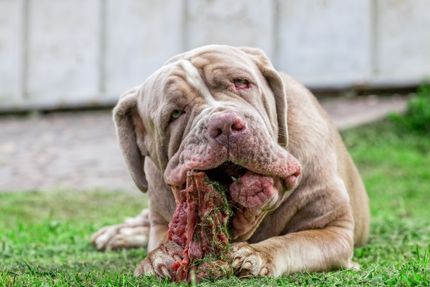
Havanese Breed description: Character & Co
Havanese
Facts & Origin
You just have to love the Havanese! These little spirited dogs have their humans wrapped around their fingers in no time at all. They are cute, smart and extremely friendly towards people.
The origin of the Havanese
Maybe their name made you think that these dogs originate in Cuba. But in fact, the beginnings of the Havanese breed are found by the Mediterranean coast of Italy and Spain. There, their ancestors probably lived as semi-wild harbour dogs. They spread to Cuba via ship. In the Cuban capital, the type of Havanese we know today developed. In Cuba it has been almost completely extinct since the 1950s. However, some enthusiasts had long since introduced these small bundles of joy to the USA. Fortunately their survival could be provided there and some time later professional breeding was established. In the 1980s the first Havanese came back to Europe and quickly found many enthusiastic friends here in Germany.
The breed characteristics of the Havanese
These little dogs are simply fun! Beside their very sunny character, their coat is another outstanding breed characteristic of this dog. Close to floor-length, soft and silky it shimmers in many colours. Some types have wavy fur spiraling towards the ground.
Seeing a Havanese playing around freely, you can often only recognise their wild hair blowing around. When their long hair is not tied back, their alert little button eyes sometimes completely disappear underneath their dense coat. Another trademark is the dark and small pointed nose of these happy fellows.
- small dog
- FCI Standard No. 250, Group 9 "Society and companion dogs".
- Section 1 "Bichons and related breeds".


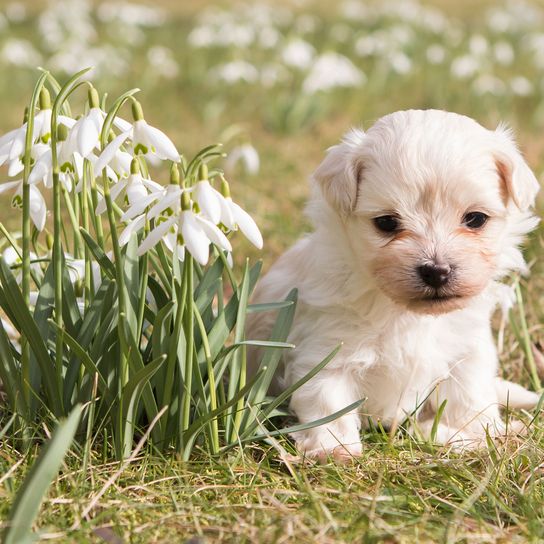

| Alternate Name | Havanese |
| Origin | Cuba |
| Life expectancy | 13 - 15 years |
| Care requirements | high-maintenance |
| Activity level | low |
| FCI group | Bichons and related breeds |
| AKC group | Toy Group |
| KC group | Toy Group |
Havanese mixes
Attitude, character and temperament of the breed
The typical character traits of the Havanese
With a Havanese, you add playful little friend to the household. They're usually in a good mood and need to always be occupied. Nevertheless, they can also be stubborn. If you provoke them, they may challenge you to find out who is stronger, something you might not have expected from a small dog like this.
They are tough and persistent. Nevertheless, their temperament can be easily regulated at any point. The Havanese is absolutely suitable for children. Nevertheless, smaller children should never be left unattended with this dog for a longer period of time. This enthusiastic walker is also suitable for agile elderly people. With a Havanese in the house it is hardly ever boring! When they are done playing, they like to cuddle extensively with their human. Here's what you should know about them:
- cheerful, playful, active
- can have a mind of it's own and sometimes stubborn
- loves long walks, but does not need excessive amounts of exercise or activities and is therefore -
- also suitable for children and elderly
Character
Usage
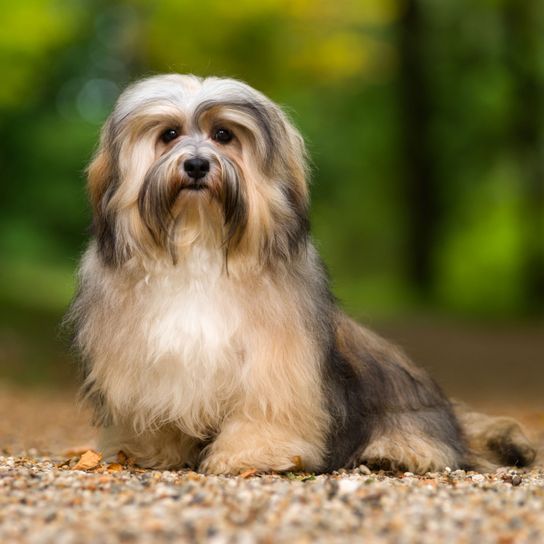



Health and breeding information
Breed typical diseases of the Havanese
Havanese breeding has remained completely free of typical breed diseases up to now. Nevertheless, you and your dog should regularly see a vet for health check-ups. From an age of seven years at the latest, an annual examination is recommended.
Buying a Havanese from a breeder or adopting from an animal shelter
A purebred Havanese puppy including papers will cost 800 Euro and more. The Havanese breed is quite common and there is a large supply of this breed.
With a little patience you might be able to find a hobby breeder who will give away a Havanese puppy without a great pedigree at a slightly lower price.
But be careful not to end up with a mass reproducer. You can recognise a good breeder by the fact that they offer only one or two breeds at most and only have one litter per year and mother animal.
Recognised and reliable breeders can be found through the umbrella organisation VDH.
Although small dogs are rather rare to be found in a shelter, with a little luck you can still find a real Havanese. The best way to do this is to use Germany-wide registers and intermediary exchanges.


Appearance and coat of the Havanese
The body of the Havanese is close to the ground and compact. Even if they might be small, these dogs have a lot of strength due to their sturdy build. Their actual body almost disappears underneath their long, dense fur.
Their hanging ears are also covered with long hair and are positioned relatively high on their head. This results in a typical cute look as soon as the dog with pointed ears turns their attention towards something. They prefer to carry their tail loosely curled up over the back.
The Havanese can have many different colours and shades. With relatively long hair that can be wavy or straight. Besides the brown or black shades, the pure white Havanese is considered a classic. You have to brush their coat regularly to remove small knots or dirt. Trimming or cutting is not usually necessary.
- small, sturdy build
- short legs
- medium to long hair
- colours cream white, white, brown, black and mixtures
- no trimming or cutting required
Size, weight and life expectancy of the Havanese
A full-grown Havanese almost always remains below 30 cm measured at the withers. Male and female dogs do not differ as much as it is the case for other dog breeds.
- height at withers male and female ca. 24 to 29 cm
- weight male or female approx. 5 to 9 kg.
- life expectancy 13 to 15 years
| Fur length | medium |
| Fur | wavy |
| Ear shape | Floppy Ear |
| Tail | fanned out |
| Anatomy | - |
| Size ♀ | 23 - 27 cm |
| Weight ♀ | 4 - 7 kg |
| Size ♂ | 23 - 27 cm |
| Weight ♂ | 4 - 7 kg |
| Suitable For | Beginner, Seniors |
Colors


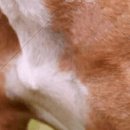





FAQ
-
A puppy costs about 2000 Euro.
-
At the age of about 8 months the Havanese changes his puppy coat.
-
A Havanese can be barky, but with good training can also be a very calm companion.
-
A Havanese is fine with 2 hours of exercise a day.
Sources and relevant links
Horst Hegewald-Kawich (2015). Hunderassen von A bis Z: Über 200 beliebte Rassen aus aller Welt. Gräfe und Unzer Verlag.
Gabriele Lehari (2004). Ulmers Großes Lexikon der Hunderassen. Ulmer.
Offizielle Seite des FCI
Accessed on 25.01.2023
VDH.de
Accessed on 25.01.2023
Other small dogs
Useful Articles
You can find articles that might interest you in the dogbible blog to match your favorite breed.
Visit our magazineto stay up to date on dog trends.
To find out more, view our Privacy Policy
Find here the breed that suits you and find out what character traits it has. Here you can also learn more about the origin, size and weight of your favorite breeds.
Matching your favorite breed, you'll find articles that might interest you on the dogbible dog blog.
Recipe for cracked paws in dogs - home remedy
First aid for dogs - everything you should know
Tips for Mallorca holidays with dog - these hotels and places you should know
Dry food or wet food for the dog - which is the better option















